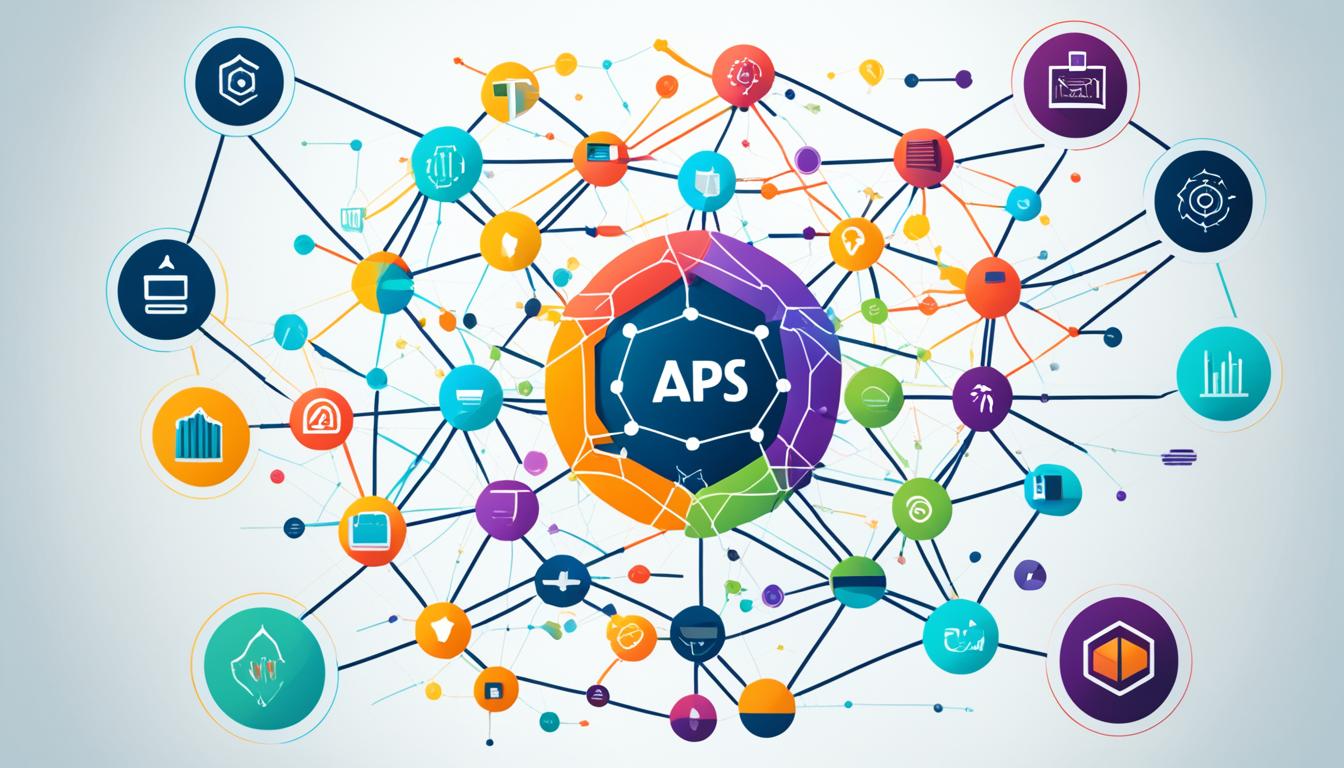Are you ready to take your business strategy to the next level? Look no further than APIs. APIs, or Application Programming Interfaces, are the secret sauce behind seamless communication between different software applications. With APIs, you can unlock a world of possibilities for your business, enabling data and functionality to flow effortlessly between systems.
APIs are not just technical jargon; they play a crucial role in driving connectivity, innovation, efficiency, and ultimately, business growth. They serve as bridges that allow developers to build on existing software, streamline processes, enhance user experiences, and enable customization. From weather apps to social media sharing, payment gateways to travel booking, APIs are everywhere, making our digital lives more convenient.
So, how can you leverage APIs for your business strategy? It’s all about understanding the power they hold and incorporating them into your integration strategy. By harnessing the potential of APIs, you can supercharge your operations, streamline workflows, and create new business opportunities.
Key Takeaways:
- APIs act as bridges that enable communication between software applications.
- APIs fuel innovation, enhance user experiences, and drive business growth.
- APIs are crucial components of open strategies for businesses.
- API integration can streamline workflows, increase efficiency, and unlock business opportunities.
- Leveraging APIs requires identifying integration opportunities, choosing the right APIs and integration tools, planning and executing integration, testing and monitoring the integrated systems, and embracing continuous improvement.
Understanding API Meaning and Its Significance: A Beginner’s Guide
In today’s digital landscape, APIs, or Application Programming Interfaces, play a crucial role in bridging the gap between different software applications. Acting as messengers or bridges, APIs enable seamless communication and collaboration between these applications, allowing them to share data, functionality, and resources. They serve as the backbone of connectivity, unlocking a world of possibilities for developers, businesses, and IT professionals.
APIs hold immense significance in the modern tech-driven world. By facilitating connectivity, they fuel innovation by enabling developers to build on existing software and create new functionalities. APIs streamline processes, enhance user experiences, and drive business growth. They are at the core of creating customized solutions that cater to specific user needs and preferences.
API meaning goes beyond the technical aspect. It represents a gateway that opens up endless opportunities for seamless integration and collaboration. Real-world examples of APIs can be seen in everyday applications. Weather apps fetch data from weather APIs to provide users with accurate forecasts. Social media platforms leverage APIs to enable sharing and interaction among users. Payment gateways connect securely with banks through APIs to facilitate financial transactions. Mapping services rely on APIs to provide accurate location data. Travel booking platforms integrate various APIs to offer comprehensive travel options.
APIs are the key to unlocking the true potential of software applications, allowing them to work together harmoniously and deliver enhanced functionality, efficiency, and user experiences.
The Basics of APIs
Before delving deeper into the world of APIs, it’s important to understand the basics. Every API has three primary components:
- Request: This is an action initiated by one software application to retrieve or manipulate data or access a specific functionality from another application.
- Response: After the request is made, the API processes the request and sends back a response with the requested data or functionality.
- Endpoint: An endpoint is a unique URL that represents a specific resource or functionality of an API.
APIs follow a set of rules and protocols that define how different systems communicate with each other. They make use of standardized formats, such as JSON or XML, to exchange data and ensure compatibility between different applications. Additionally, APIs require authentication and authorization mechanisms to ensure secure data exchange and protect user privacy.
As a beginner exploring the world of APIs, it’s important to start with the fundamentals. Learning how APIs work, their components, and their significance empowers individuals and businesses to harness their potential for seamless integration and innovation.
Empowering Businesses with iPaaS and Microservices Architecture
iPaaS (Integration Platform as a Service) and Microservices Architecture are transformative approaches that empower businesses to modernize and streamline their operations, driving sustainable growth and enabling a seamless technology ecosystem.
iPaaS facilitates seamless integration, connecting different software applications and systems. It enhances agility, scalability, and efficiency by ensuring smooth communication between various components of a business’s technology stack. With iPaaS, businesses can leverage the power of APIs to unlock the potential of their data and processes, enabling real-time collaboration and driving innovative solutions.
On the other hand, Microservices Architecture breaks down complex applications into smaller, independent services. This approach improves flexibility and innovation by allowing businesses to develop and deploy software components independently. Each microservice can be scaled and updated without affecting the entire system, enabling businesses to respond quickly to market demands and customer needs.
Together, iPaaS and Microservices Architecture create a powerful combination for businesses looking to transform their operations and seize opportunities in the digital age. By embracing these technologies, businesses can adapt quickly to changing market conditions, enhance customer experiences, and drive business transformation.
| Benefits of iPaaS and Microservices Architecture | iPaaS | Microservices Architecture |
|---|---|---|
| Enhanced Agility | Enables seamless integration between applications and systems | Breaks down complex applications into smaller, independent services |
| Scalability | Allows for scalable and flexible integration of new applications | Enables individual microservices to be scaled independently |
| Efficiency | Streamlines workflows and eliminates manual processes | Improves development and deployment speed |
| Innovation | Facilitates the creation of new applications and services through API integration | Enables businesses to develop and deploy software independently |
In the rapidly evolving business landscape, adopting iPaaS and Microservices Architecture is crucial for businesses that want to stay competitive and thrive in a technology-driven world. These transformative approaches provide the foundation for businesses to harness the power of their technology ecosystem, driving efficiency, innovation, and business transformation.

Open Banking and API-Driven Transformation
Open Banking and API-Driven Transformation are revolutionizing the financial sector, ushering in a customer-centric future and reshaping the way individuals interact with their finances. As the global financial landscape continues to evolve, open banking initiatives have emerged as a crucial catalyst for change, enabling increased competition, innovation, and collaboration across the industry.
Open Banking is a regulatory framework that mandates financial institutions to provide secure APIs, or Application Programming Interfaces, granting third-party developers access to customer data. These APIs serve as bridges that connect traditional banking systems with fintech startups, enabling the development of innovative financial products and services.
“Open banking has the potential to enhance customer experiences, drive new business models, and shape the future of finance towards a more transparent, customer-centric approach.” – John Smith, Chief Financial Officer at ABC Bank
By embracing open banking and API-driven transformation, the financial sector is undergoing a paradigm shift towards a more integrated and collaborative ecosystem. This evolution paves the way for a plethora of customer-centric services, empowering individuals to access a wide range of financial solutions tailored to their unique needs and preferences.
The adoption of APIs in the financial sector has already yielded significant benefits. Ranging from seamless payment experiences and personalized financial management apps to enhanced fraud prevention and real-time transaction notifications, APIs have become the driving force behind a more intuitive and customer-centric banking experience.
Open banking and API-driven transformation are not only transforming banking services but also revolutionizing the wider financial landscape. Insurance companies, investment platforms, and other financial institutions are leveraging APIs to provide a diverse array of services, catering to the evolving needs and expectations of customers.
The Benefits of Open Banking and API-Driven Transformation:
- Enhanced Customer Experiences: Open banking enables customers to access a broader range of financial products and services tailored to their specific needs, leading to a more personalized and intuitive experience.
- Increased Competition and Innovation: The availability of secure APIs fosters healthy competition among financial institutions and fintech startups, promoting innovation and driving the development of novel financial solutions.
- Streamlined Operations: API-driven integration allows for seamless data exchange between banking systems, reducing manual processes and improving operational efficiency.
- Improved Financial Inclusion: Open banking initiatives create opportunities for underserved populations to access financial services and bridge the gap between traditional banking and fintech innovations.
- Facilitated Partnerships and Collaboration: API connectivity facilitates collaborations between financial institutions and third-party service providers, fostering mutually beneficial partnerships and expanding the range of services available to consumers.
Open banking and API-driven transformation are set to revolutionize the financial sector, ushering in a future where customer-centricity and innovation take center stage. As financial institutions embrace this transformative shift, they position themselves to thrive in an increasingly interconnected and dynamic landscape.

Conclusion
API integration services have become the backbone of modern businesses, offering a plethora of benefits that drive seamless operations, enhanced customer experiences, and lucrative business opportunities. By leveraging API integration, companies can streamline workflows, boost operational efficiency, and unlock real-time data synchronization. This enables businesses to scale their operations with ease, adapt to changing market demands, and stay ahead of the competition.
To harness the power of API integration services effectively, businesses should first identify integration opportunities within their operations. Then, they should carefully select the right APIs and integration tools that align with their specific needs and objectives. Planning and executing the integration process in a systematic manner is essential, followed by thorough testing and monitoring of the integrated systems to ensure optimum performance.
Continuous improvement is key in this dynamic digital landscape. By embracing a culture of constant learning and innovation, businesses can fully capitalize on the potential of API integration services. This will empower them to stay agile, deliver enhanced customer experiences, and unlock new business opportunities. With API integration services as a strategic pillar, businesses can forge ahead towards success and growth in the ever-evolving business landscape.




No comments! Be the first commenter?